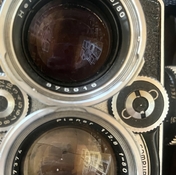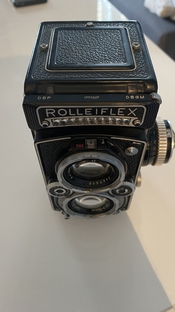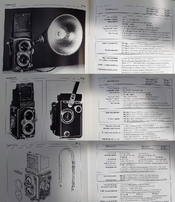Ah, Herr Prochnow. He wrote the book. But books make mistakes and the Rollei list members (most of them much older and wiser than I) have picked apart a number of Herr Prochnow's mistakes in that volume. (One other example that comes readily to mind was Prochnow's claim that the Xenotar lens was derived from the Xenar lens, when the design appeared instead to be a close derivation of a Planar lens.)
It is true that the 3.5E had an internal designation at Braunschweig of K4C. And it is also true, as you have shown, that Prochnow's taxonomy translates "K4C" to "3,5C." But Prochnow is not a primary source, nor is he an infallible one. (Far from it.)
You said that the 3.5E was sold in Europe as a 3,5C. If that is so, then there should be plenty of records from Franke and Heidecke to support such a claim. Or even advertisements from the the 1950s camera magazines. I have seen claims, like yours, that the 3.5E was sold in Europe as a 3.5C. But I have never seen any contemporary usage from a primary source that supports the claim. If you know of any, please share.
FWIW, calling K4C a "3.5C" makes little sense. It is in all respects identical to the 2.8E, except that it has an f/3.5 taking lens. The letters, as you know, designate design generations. The C generation, exemplified by the 2.8C (link to the manual in my previous post), had a ten-blade iris; had plastic rings for shutter lock and flash attachment; and lacked an internal lightmeter. The E generation moved to a five-blade iris; replaced the plastic fittings for shutter lock and flash attachment with metal fittings; and redesigned the exterior to accommodate an internal lightmeter. The K4C has all of the characteristics of the E generation of cameras, none of the C.
As I said, I was not living in Europe in the 1950s (being born in the US in 1958) so I cannot say how camera sellers marketed the camera. But it makes little taxonomic sense to call a 3.5E a C-model in light of the cameras' design history.
[PS: Apologies for beating a dead horse.]






















